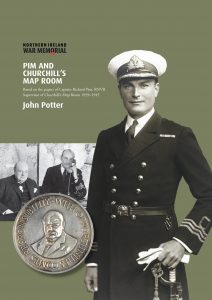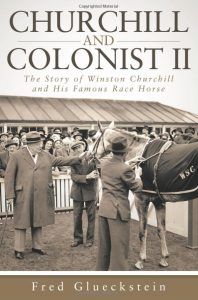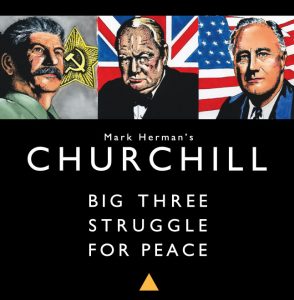
Bulletin #87 - Sep 2015
Blood, Sweat, and Oil Paint
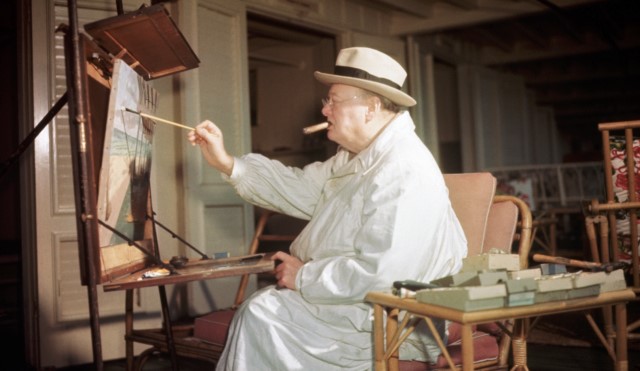
September 2, 2015
BBC’s Andrew Marr Examines Churchill the Painter
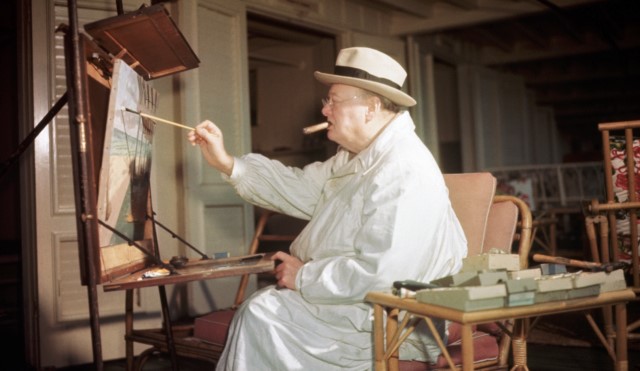 During the fiftieth anniversary year of Churchill’s death, the BBC continues to probe his legacy. Veteran British journalist Andrew Marr ventured to Chartwell to examine Churchill’s painting studio and tell the story of how “Britain’s greatest prime minister”—his words—took to painting as a pastime and how this sustained Churchill from then on. To view the full one-hour documentary, please CLICK HERE.
During the fiftieth anniversary year of Churchill’s death, the BBC continues to probe his legacy. Veteran British journalist Andrew Marr ventured to Chartwell to examine Churchill’s painting studio and tell the story of how “Britain’s greatest prime minister”—his words—took to painting as a pastime and how this sustained Churchill from then on. To view the full one-hour documentary, please CLICK HERE.
Marr interviews Churchill’s granddaughters Celia Sandys and Emma Soames, who recall how serious their grandfather was about painting. The studio at Chartwell was every bit as out of bounds for the grandchildren as the study, so much did Churchill dislike being interrupted while working. Celia explains that her grandfather became completely absorbed in his canvas while painting and that the grandchildren learned not to disturb him at these times even though they knew their grandfather loved them dearly.
Also interviewed by Marr is Churchill painting authority David Coombs. They discuss how much time Churchill spent in the company of the great English painters of his era such as William Orpen and John Lavery and how immensely Churchill respected these artists, who in turn respected him because they understood how seriously he approached painting.
Marr describes himself as an amateur artist while admitting he is not as good as Churchill, who at his best was a very good amateur painter indeed. Throughout the programme Marr is seen making his own efforts at drawing or filling a canvas. He travels to Morocco and the south of France to visit Churchill’s favorite “paintalicious” venues. Marr reveals that he has recently recovered from a major stroke and that painting for him, as it had been for Churchill during the First World War, was a way of recovering from adversity.

2024 International Churchill Conference
If at time Marr overdoes his descriptions of Churchill’s dark moods—especially his florid and faulty depiction of Churchill during the Wilderness Years—he redeems himself with his own passionate appreciation of the seriousness and humanity of Churchill’s life as a painter. Clearly Marr’s own personal trauma has led him to a very personal understanding of what painting meant to Churchill, and we come to understand that there is in fact more blood and sweat in Churchill’s oil painting than first meets the eye.
Earlier this year the BBC produced two Churchill documentaries. The first, The Nation’s Farewell, proved quite good, albeit with one glaring fault. The second, When Britain Said No, turned out to be a poorly constructed hatchet job. But the Beeb bounced back with an intriguing investigation into the authenticity of a putative Churchill canvas in an episode of Fake or Fortune? With the addition now of Churchill: Blood, Sweat, and Oil Paint, we can see that on balance the BBC have done better this year when sticking with Churchill the artist. As Churchill himself exclaimed, “Happy are the painters!”
Subscribe
WANT MORE?
Get the Churchill Bulletin delivered to your inbox once a month.
